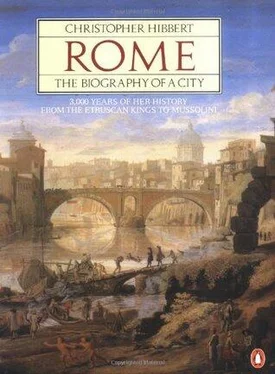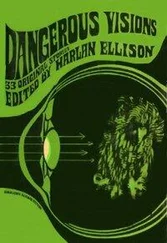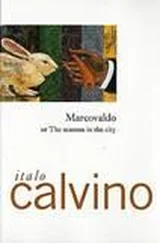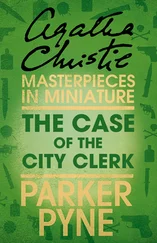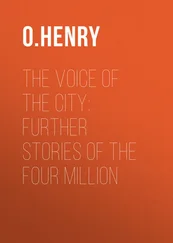Christopher Hibbert - Rome. The Biography of the City
Здесь есть возможность читать онлайн «Christopher Hibbert - Rome. The Biography of the City» весь текст электронной книги совершенно бесплатно (целиком полную версию без сокращений). В некоторых случаях можно слушать аудио, скачать через торрент в формате fb2 и присутствует краткое содержание. Жанр: Культурология, Искусство и Дизайн, на английском языке. Описание произведения, (предисловие) а так же отзывы посетителей доступны на портале библиотеки ЛибКат.
- Название:Rome. The Biography of the City
- Автор:
- Жанр:
- Год:неизвестен
- ISBN:нет данных
- Рейтинг книги:3 / 5. Голосов: 1
-
Избранное:Добавить в избранное
- Отзывы:
-
Ваша оценка:
- 60
- 1
- 2
- 3
- 4
- 5
Rome. The Biography of the City: краткое содержание, описание и аннотация
Предлагаем к чтению аннотацию, описание, краткое содержание или предисловие (зависит от того, что написал сам автор книги «Rome. The Biography of the City»). Если вы не нашли необходимую информацию о книге — напишите в комментариях, мы постараемся отыскать её.
Rome. The Biography of the City — читать онлайн бесплатно полную книгу (весь текст) целиком
Ниже представлен текст книги, разбитый по страницам. Система сохранения места последней прочитанной страницы, позволяет с удобством читать онлайн бесплатно книгу «Rome. The Biography of the City», без необходимости каждый раз заново искать на чём Вы остановились. Поставьте закладку, и сможете в любой момент перейти на страницу, на которой закончили чтение.
Интервал:
Закладка:
The elderly and pliable lawyer, Marcus Cocceius Nerva, undoubtedly one of the conspirators, was chosen to succeed him. But the fury of the army, whose pay Domitian had considerably increased, and of the rank and file of the Praetorian Guard, forced Nerva to adopt a son and heir from outside his own family. And so, in 98, a gifted provincial official, well liked by both the army and the Senate, Marcus Ulpius Traianus, became Emperor upon Nerva's death.
Trajan had been born near Seville in 53. His mother was Spanish, his father a descendant of Roman settlers. He himself had served with distinction as Governor in Upper Germany and after two highly successful campaigns in the Kingdom of Dacia (in what is now Romania), the immense sums seized from this rich land enabled Trajan to undertake a programme of public works in Rome on a scale of unparalleled grandeur. On the site of Nero's Golden House he built the city's finest baths. 8He constructed a new Forum, the last of its kind, to the designs of the great architect from Damascus, Apollodorus, whose marble colonnades, temples, libraries and grand Basilica Ulpia, surrounding an open space with marble statues and bronze reliefs, were long considered amongst the most wonderful marvels of the ancient world. 9He built commodious markets, the Mercati Traianei, whose shops, originally built in three tiers, can still be seen off the Via IV Novembre. 10And most remarkable of all, to the west of the markets, Trajan erected in 113 the monumental column whose summit about 140 feet above the ground marks the height of the ridge that once separated the Forum from the Campus Martius. Designed by Apollodorus and constructed of eighteen blocks of marble four feet high and eleven and a half feet in diameter, it is decorated with exquisitely executed reliefs which spiral up around it, containing 2,500 figures and constituting a detailed and uniquely informative narrative of Trajan's Dacian campaigns. At the top of the column stood a statue of the victorious Emperor, and a spiral stone staircase inside led to a platform from which extensive views could be enjoyed over the rooftops of the city. 11
The population of Rome at this time was probably about a million, their buildings covering an area of almost eight square miles. But there were so many large public basilicas, temples, circuses, baths and theatres, so many acres of imperial gardens, so much land that could not be inhabited for fear of offending the gods that most people were compelled to live in tall apartment blocks, insulae , which towered, as many as six storeys high, over the narrow lanes. 12
In the more solid and pleasant of these insulae the whole of the ground floor was occupied by a single tenant and the accommodation was nearly as spacious as that in a house; but the apartments over it were small and cramped and became increasingly less desirable on each successive floor, the highest and cheapest floors being overcrowded with tenants and sub-tenants, their families and dependants. From the outside, the insula might well present an attractive appearance, its façade decorated with tiles and mosaics, with balconies of wood or brick projecting from each storey and with potted plants and flowers to be seen behind their railings. Inside, however, the apartments were for the most part dark and comfortless, lit by windows covered with parchment or sheets of cloth, or by wooden shutters which might keep out the rain or the glaring sun but which plunged rooms into a darkness that a candle or smoky lamp did little to alleviate. Furniture was sparse, limited to a few stools and beds, though the beds were frequently part of the structure, shelves or bunks fitted against the wall. Heat was commonly provided by movable braziers and cooking done on open stoves, so that the flimsily built structures were as likely to catch fire as they were to collapse.
Water supply and sanitation were almost as primitive as they had been in the time of the kings. By Trajan's day more than 200 million gallons of water were brought into Rome every day by eight aqueducts; but while the occupants of some of the ground floors of the insulae benefited from this, those who lived above them did not. Water had to be fetched in buckets from fountains in the streets or brought up the stairs by notoriously lazy and ill-natured water-carriers. Similarly, while the drainage system of the city, started seven centuries before, had since been regularly extended and improved, the upper floors of the insulae were not connected to it. Their occupants had to take their receptacles downstairs to empty them into a pit in the basement or into nearby cess trenches. Those who could not or would not do this hurled their contents from the windows into the street.
Despite Nero's reconstruction of the city on a more regular plan after the fire of 64, many of the streets of Rome were as narrow, tortuous and dark as they had ever been, the widest being scarcely more than twenty feet and, in the centre of the city, the Via Sacra and the Via Nova were not even as wide as this. Not all of them were paved or had sidewalks and, although a decree had been passed in the time of Domitian prohibiting shopkeepers from displaying their wares in the streets, the decree seems not to have been too strictly observed. The lower floors of many insulae were divided into shops and booths, taverns and warehouses; and, since the traders' families lived in poky little lofts approached by ladders, it was natural that they should wish to spend their lives in the streets when the weather allowed and to bring out their goods to catch the attention of the passers-by. As well as shopkeepers, barbers carried on their business in the street, cutting hair with iron scissors in the fashion favoured by the reigning Emperor or some idolized charioteer, curling the locks of the young, dyeing those of the old, shaving chins with iron razors which were often painfully blunt despite frequent recourse to the whetstone, and, when their arms were jogged by the crowd, staunching the consequent flow of blood with spiders' webs soaked in oil and vinegar.
Craftsmen, too, worked in the street; itinerant vendors shouted their wares; jugglers, snake charmers and acrobats collected audiences; beggars thrust forward their bowls and cans; and even schoolmasters attempted to teach their pupils in the persistent din. The passage of carts and baggage animals in the streets during the hours of daylight had been forbidden by law by Julius Caesar, and the prohibition had remained in force; but horsemen were allowed, and so were the wagons of demolition and building contractors, litters and chairs borne by slaves; on the frequent days when public games were held, so were chariots bound for the amphitheatre, and, on the days of religious festivals, the carriages of priests and Vestal Virgins. The embargo on other vehicles did little, therefore, to lessen the confused congestion of the daytime streets, while the nights were disturbed by the shouts of wagoners and drovers, and the cries of night watchmen in the unlit alleys. ‘Most sick men die here from insomnia,’ Juvenal who was living in Rome at the end of the first century wrote in one of his satires:
Rest is impossible. It costs money to sleep in Rome.
There is the root of the sickness. The movement of heavy wagons
through narrow streets, the oaths of stalled cattle drovers
would break the sleep of a deaf man or a lazy walrus.
On a morning call the crowd gives way before the passage
of a millionaire carried above their heads in a litter,
reading the while he goes, or writing, or sleeping unseen:
for a man becomes sleepy with closed windows and comfort.
Yet he'll arrive before us. We have to fight our way
through a wave in front, and behind we are pressed by a huge mob
shoving our hips; an elbow hits us here and a pole
Читать дальшеИнтервал:
Закладка:
Похожие книги на «Rome. The Biography of the City»
Представляем Вашему вниманию похожие книги на «Rome. The Biography of the City» списком для выбора. Мы отобрали схожую по названию и смыслу литературу в надежде предоставить читателям больше вариантов отыскать новые, интересные, ещё непрочитанные произведения.
Обсуждение, отзывы о книге «Rome. The Biography of the City» и просто собственные мнения читателей. Оставьте ваши комментарии, напишите, что Вы думаете о произведении, его смысле или главных героях. Укажите что конкретно понравилось, а что нет, и почему Вы так считаете.
